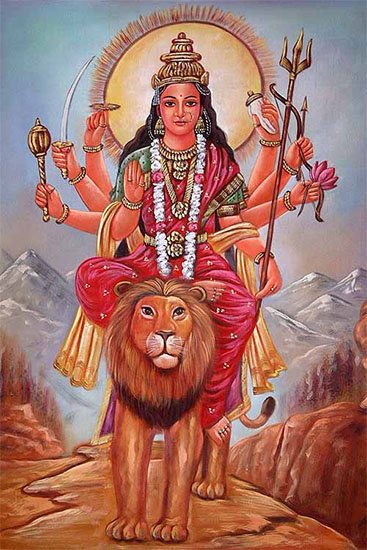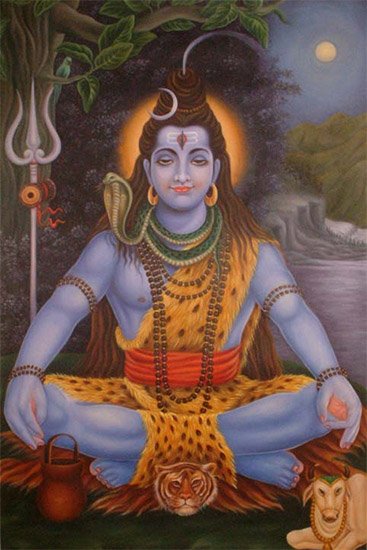Mantroddhara, Mantroddhāra, Mantra-uddhara: 7 definitions
Introduction:
Mantroddhara means something in Hinduism, Sanskrit. If you want to know the exact meaning, history, etymology or English translation of this term then check out the descriptions on this page. Add your comment or reference to a book if you want to contribute to this summary article.
In Hinduism
Shaktism (Shakta philosophy)
Source: Google Books: ManthanabhairavatantramMantroddhāra (मन्त्रोद्धार) refers to the “extraction of mantras”, according to the Kularatnoddyota (verse 2.4cd-10).—Accordingly, “[The Śrīkula is] accomplished by the Command and, supremely divine, it is adorned with the lineage of the Śrīkrama. [...] (Along with these things) I will tell you about the practice of the method of the Great Yoga correctly and as it truly is. (I will impart) the teaching concerning the extraction of mantras (mantroddhāra-vinirṇaya) and that concerning the Ages (yuga), the aeons of the descent (of the teaching) and the rest (along with that concerning) conduct and Yoga and the characteristic mark of (true) Yoginīs”.

Shakta (शाक्त, śākta) or Shaktism (śāktism) represents a tradition of Hinduism where the Goddess (Devi) is revered and worshipped. Shakta literature includes a range of scriptures, including various Agamas and Tantras, although its roots may be traced back to the Vedas.
Mantrashastra (the science of Mantras)
Source: Shodhganga: Kasyapa Samhita—Text on Visha Chikitsa (mantra)Mantroddhāra (मन्त्रोद्धार) refers to the “extraction of the mantra”.—Mantras refers to “that which is chanted by people to obtain their spiritual aspirations”. Every mantra invariably has to come under 26 kinds of chandas or metrical form. These stand for the 26 modes or ways in which different sounds can be arranged, taken one at a time, two at a time and so on. The art of discovering or decoding the mantra is called mantroddhāra. Prior to it being used in a rite, each mantra must be ritually made to manifest from its sonic source, the Mātṛkā. Mantroddhāra is the culling, extracting or invoking of the mantra when an aspirant seeks dīkṣā or its initiation.
Mantrashastra (शिल्पशास्त्र, mantraśāstra) refers to the ancient Indian science of mantras—chants, incantations, spells, magical hymns, etc. Mantra Sastra literature includes many ancient books dealing with the methods reciting mantras, identifying and purifying its defects and the science behind uttering or chanting syllables.
Shaivism (Shaiva philosophy)
Source: eScholarship: The descent of scripture: a history of the KamikagamaMantroddhāra (मन्त्रोद्धार) refers to the “formation of mantras”, according to the Kāmikāgama: an ancient Śaiva Āgama scripture in 12,000 Sanskrit verses dating to at least the 5th century and represented as an encyclopedic account of ritual instructions (kriyāpāda).—In modern print editions, the Kāmika-āgama is structured in two major parts. The Pūrvabhāga consists of 75 chapters (paṭalas) [...] The first chapter opens with an account of the descent of scripture (tantrāvatāra). This is followed in Chapter 2 by a treatment of the formation of mantras (mantroddhāra).

Shaiva (शैव, śaiva) or Shaivism (śaivism) represents a tradition of Hinduism worshiping Shiva as the supreme being. Closely related to Shaktism, Shaiva literature includes a range of scriptures, including Tantras, while the root of this tradition may be traced back to the ancient Vedas.
Pancaratra (worship of Nārāyaṇa)
Source: Wisdom Library: PāñcarātraMantroddhāra (मन्त्रोद्धार) [=mantroddhārakramanirūpaṇam] refers to one of the topics dealt with in the eighteenth chapter of the Ahirbudhnyasaṃhitā: an ancient Pāñcarātra Āgama scripture dealing with the symbology of the Sudarśana weapon while also dealing with iconography, philosophy and Vaiṣṇava rituals.
Source: archive.org: Catalogue of Pancaratra Agama TextsMantroddhāra (मन्त्रोद्धार) (lit. “composing mantras”) is the name of the eighteenth chapter of the Ahirbudhnyasaṃhitā, a Pāñcarātra work in 60 chapters dealing with topics such as Viṣṇu’s discus-power, the processes of creation and esoteric practices related to Sudarśana (such as mantras and yantras).—Description of the chapter [mantroddhāra]: A devotee, in order to employ mantras effectively, must first himself become a proper receptacle for all the powers inherent in the formula’s letters. Directions for achieving this fitness are generally given, along with specific directions for how to compose or construct particular mantras by employing these letters and mystic values in various combinations (1-48).

Pancaratra (पाञ्चरात्र, pāñcarātra) represents a tradition of Hinduism where Narayana is revered and worshipped. Closeley related to Vaishnavism, the Pancaratra literature includes various Agamas and tantras incorporating many Vaishnava philosophies.
Languages of India and abroad
Sanskrit dictionary
Source: Cologne Digital Sanskrit Dictionaries: Aufrecht Catalogus CatalogorumMantroddhāra (मन्त्रोद्धार) as mentioned in Aufrecht’s Catalogus Catalogorum:—Hpr. 1, 275.
Source: Cologne Digital Sanskrit Dictionaries: Monier-Williams Sanskrit-English DictionaryMantroddhāra (मन्त्रोद्धार):—[from mantra > man] m. selection or extract from s° t° or magical formulas (?)
Sanskrit, also spelled संस्कृतम् (saṃskṛtam), is an ancient language of India commonly seen as the grandmother of the Indo-European language family (even English!). Closely allied with Prakrit and Pali, Sanskrit is more exhaustive in both grammar and terms and has the most extensive collection of literature in the world, greatly surpassing its sister-languages Greek and Latin.
See also (Relevant definitions)
Partial matches: Mantra, Uddhara.
Starts with: Mantroddharakosha, Mantroddharaprakarana, Mantroddharavidhi.
Ends with: Angamantroddhara, Angopangamantroddhara, Hanumanmantroddhara, Mrityumjayamantroddhara, Pratyangirasiddhamantroddhara, Shulinimantroddhara.
Full-text (+4): Mantroddharakosha, Mantroddharaprakarana, Mantroddharavidhi, Hanumanmantroddhara, Pratyangirasiddhamantroddhara, Upangamantra, Angamantra, Jayini, Chandas, Vimala, Vashini, Modini, Kaulini, Sarveshvari, Tantravatara, Vinirnaya, Mantroddharin, Diksa, Sharika, Kameshvari.
Relevant text
Search found 4 books and stories containing Mantroddhara, Mantroddhāra, Mantra-uddhara, Mantra-uddhāra; (plurals include: Mantroddharas, Mantroddhāras, uddharas, uddhāras). You can also click to the full overview containing English textual excerpts. Below are direct links for the most relevant articles:
Varahi Tantra (English Study) (by Roberta Pamio)
Chapter 13 - Mantras and Yantras (mystical diagrams) < [Summary of the Vārāhī Tantra]
Chapter 22 - The the Six Āmnāyas < [Summary of the Vārāhī Tantra]
Chapter 15 - The worship of Siddhilakṣmī < [Summary of the Vārāhī Tantra]
Dvisahasri of Tembesvami (Summary and Study) (by Upadhyay Mihirkumar Sudhirbhai)
The Skanda Purana (by G. V. Tagare)
Chapter 20 - Description of Dharā Kṣetra < [Section 2 - Dharmāraṇya-khaṇḍa]
A History of Indian Philosophy Volume 4 (by Surendranath Dasgupta)
Part 3 - Important Madhva Works < [Chapter XXV - Madhva and his School]